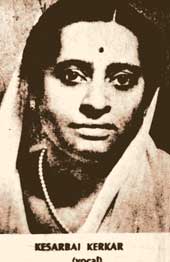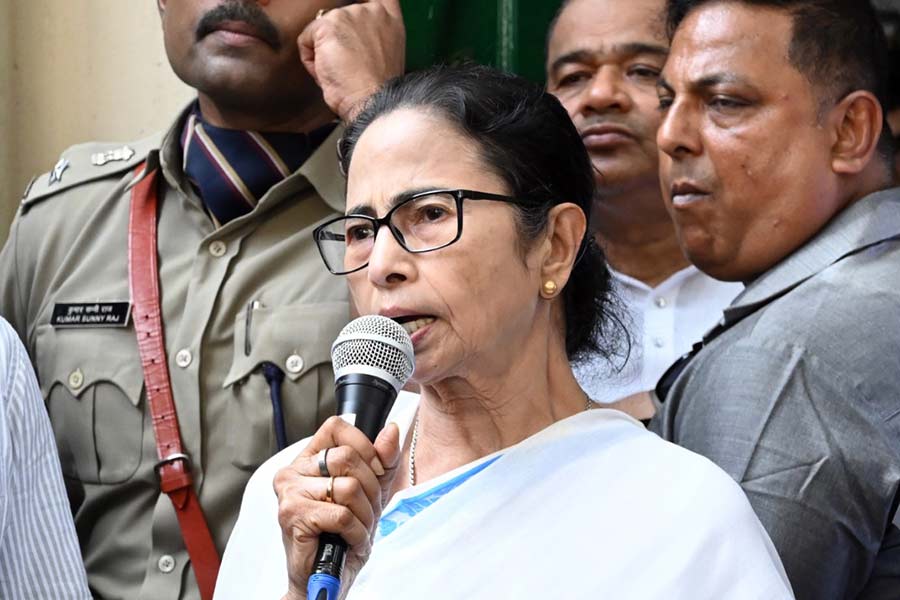 |
I had heard so much about this intrepid woman who had more enemies than friends. The stories are legendary — like the time she won the Padma Vibhushan. Kesarbai was walking down the steps of the President’s office in Delhi when she ran into Indira Gandhi, who was then Prime Minister of India. They greeted each other respectfully. After exchanging pleasantries, Mrs Gandhi requested Kesarbai to place her hand on her throat. She said that the touch of a great singer would ensure that her voice would always be in good shape. Kesarbai retorted, with a laugh: ‘Your voice seems fine, Madam. You shout quite a bit already,’ and sailed past the stunned head of state.
Another time she was asked to perform at a programme to celebrate the formation of the state of Maharashtra in 1960. After she sang, chief minister Yeshwantrao Chavan went up to her and said, ‘Ask for anything and it will be yours.’ ‘Are you sure,’ she said, her eyes twinkling.
‘Of course, Kesarbai. Today is a historic day for the city and for the people of Maharashtra. And you have graced the occasion with your tremendous art.’
‘Then give me your office for one day.’
The chief minister kept his cool. ‘What will you do with it, Kesarbai? Do tell me and I shall try and implement what you have in mind.’
Kesarbai laughed and said, ‘Never mind. But next time, don’t make promises you cannot keep.’
When Dhondutai lay down to nap, I went into the other room and stared at the portrait of the woman with the voice of a man; a woman whose temper had once prompted a wealthy Bombay businessman to crawl under the creaky wooden stage and sit in hiding for two hours so that he could listen to her music, because she had banished him from attending her concerts after they had had a tiff.
Kesarbai was known for her tempestuous outbursts in public. She would scrutinise her audience like a hawk and ensure that none of her ‘enemies’ was present. If someone made the mistake of coughing while she was singing, and she happened to be in a bad mood, she would stop in the middle of her performance and order the hapless listener to leave the auditorium.Why was she so mean spirited, yet so gifted? So narcissistic and self-destructive? How did these base traits exist in conjunction with her sublime art?
Or could it be the other way around? That to achieve that level in music, or any creative endeavour, demands an element of mania? I found, as I entered her world, that Kesarbai’s determination to become a great singer — the best in the world — was not a spiritual quest. Rather, it was driven by vengeance, and rooted in unimaginable pain.
* * *
It was 1914. A lavish feat was underway. Two well-known Marathi families were joining in matrimony through their children Hirabai and Anantrao. The men strolled into the hall from the front entrance, greeting one another jovially. The women, as was the custom, came in from the back and stayed there, hovering around the bride, commenting on her jewellery, gossiping about the décor. As the men sat around sipping sandalwood sherbet, they were surprised to see a young woman amble in through the front gate. She must have been about 18. She wore a silk saree with a sleeveless blouse. Her eyes were lined with kohl, her lips faintly stained with betel leaf. Her neck glistened with a gold necklace. There was no shawl of modesty wrapped around her shoulders, which was customary among women in those days.
She didn’t pay attention to any one, but was conscious of the eyes on her, some lascivious, others merely curious. She glided jauntily into the women’s enclosure. An audible murmur went around the party of men and one of them got up, strode inside and whispered something into his wife’s ears. A few minutes later, the groom’s mother called the bride’s mother aside.
‘Who is that woman?’
‘Her name is Kesar. She is one of our tenants. She lives in the building across ours.’ Hirabai’s mother did not dare reveal that the pretty young guest was quite friendly with her daughter. Or that they would holler and squeal at each other from their windows, even if they were separated by an unbridgeable social chasm.
‘Well, clearly, she does not belong here. Women like that should not be at functions like ours. We are Brahmins. What will people say…’ hissed the mother of the groom.
‘Tai. What do you want me to do? I can’t possibly ask her to leave now that she is here. That would be deeply insulting.’
‘It would be far more inauspicious for her to stay. The ceremony is exactly half an hour away. If you still want the wedding to take place, please make sure she is not here. The choice is yours.’
The hostess hurriedly went and whispered something in the young woman’s ears. Kesar stared at the older woman in disbelief. Her kohl-lined eyes filled up but she did not allow even a drop to escape. Then, without saying a word, she got up and left.
As she walked home crying in the noonday sun, the enraged young woman swore to herself that one day, she would make this very gentry pine for her.
She did — she became the great Kesarbai Kerkar. But the stigma that surrounded ‘singing women’ was not about to disappear very quickly. It festered in the hearts of a patriarchal society, which enjoyed its women entertainers but didn’t want them mingling with their daughters.
In fact, even 50 years later, people harboured the same feelings about this community. Long after Kesarbai had established herself as a great diva, and long after India had entered an era of so-called modernity, when her granddaughter Ila was getting married in the 1970s, she faced similar murmurs of outrage because of her lineage. It didn’t matter to the middle class Maharashtrian sensibility that the bride’s grandmother was one of the greatest singers India had ever heard. She was, after all, a ‘bai’, from the courtesan community.
Extracted from The Music Room; By Namita Devidayal; Published by Random House, India. The Music Room will be published on September 22











